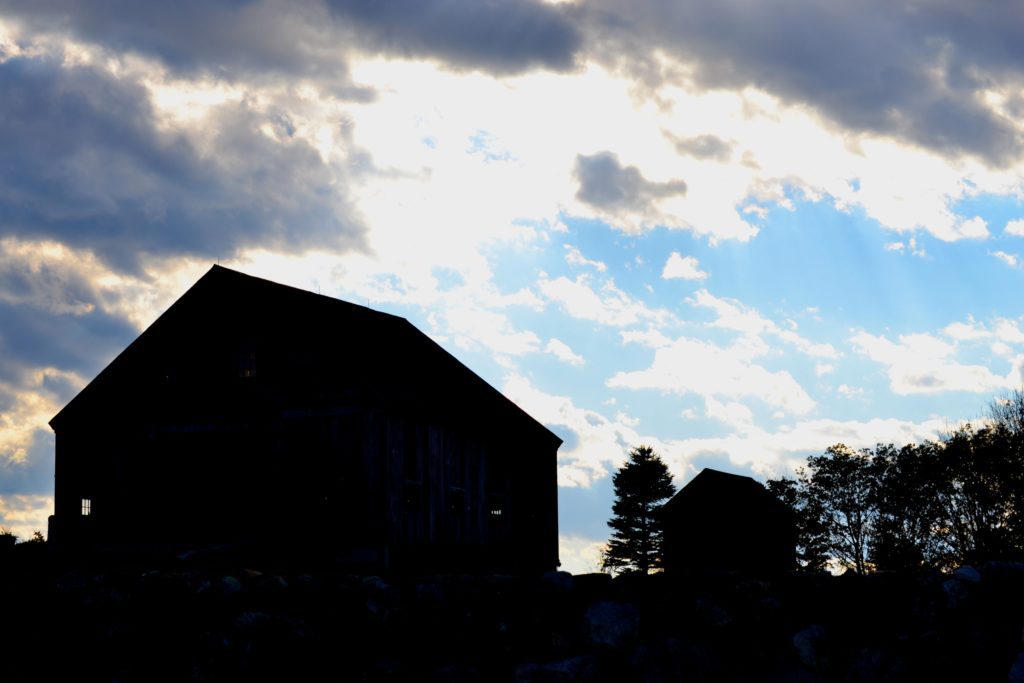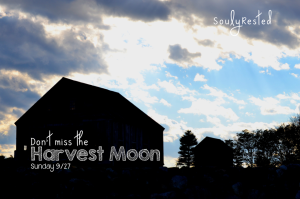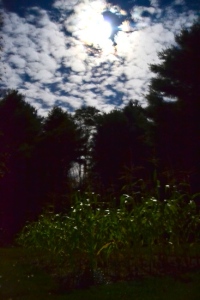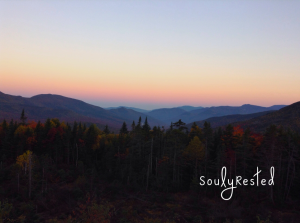Last Updated on March 20, 2019 by Michelle
“Don’t tell me the moon is shining; show me the glint of light on broken glass.” Or so Anton Chekhov wrote. I’m reminded of the quote as I scratch “Harvest Moon” on a Sunday square of the calendar.
As a writer, I wholeheartedly agree with the Russian author.
As a teacher, I instruct my students to interrogate all of their readers’ senses.
As a New Englander, looking forward to the approaching Harvest Moon that will bathe our homestead in cool, penetrating splendor in the crisp autumn stillness, I have to rephrase Chekhov’s truism.
On September 27th, when we amble across our moon-illuminated fields and rest in our hammocks under the apple branches, or when we move our picket fence gate to the side and inspect our corn crop or tap our watermelon to test their ripeness, I might remind my daughters, “The Harvest Moon has lit these fields for generations before us. But tonight just might be one of those simple moments that is worthy of being remembered as great. Write about this moment and keep it for the next generation. Tuck away your words and unfold this moment again some day, to show your own daughter.”
Along the lines of Chekhov’s theme, I will tell them, “Don’t just tell her that the moon was shining, but show her how the cool light highlighted the apples bowing over our rope hammock and bleached the corn silk standing regally in the garden rows.”
If you have the privilege of driving a New England backroad this fall–one that bends around mountains and opens to bold autumn vistas or humble sugar shacks tucked under glowing yellow maple trees–and if you’re here on one of the last days of this month, be sure to not miss this “other” New England beauty.
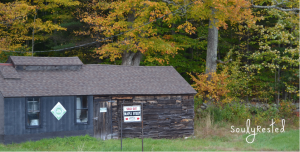
Yes, we’re known worldwide for our fall foliage that bedazzles our rolling forests with colors yet unnamed.
But we have another Autumn jewel as well… the Harvest Moon.
She’s the quiet but oh-so-bold luminary who has lit our rocky fields every fall, for every generation before us. The generous Harvest Moon has shed her accommodating light over New England farmers since that first brave man and woman turned over their own patch of the rocky soil. The mountainous, granite-rock-covered land can be so unforgiving. The arduous farmers must have been grateful to glean a bounty from her. I’m certain the gracious lunar light that extended their profitable working hours for many harvest days in a row also extended their gratitude.
And this September, we’ll even enjoy the extra-large size of a supermoon. It earns that recognition because this year’s Harvest Moon will be full on the same night that it is closest to the Earth.
Yet we know the moon, regardless of appearances, never actually changes size. So why does the Harvest Moon appear to be so enormous? Well, plenty of scientifically minded folks, who know way more about the cosmos than little ole me, still don’t agree on this. But I’ll give you my two-cent description. (This is based on lots of reading; don’t think for a minute I actually came up with this hypothesis.) You see, when the full moon hangs on the horizon, there are plenty of things surrounding her–trees, houses, mountains–and those things are so tiny compared to her that she eclipses them and makes us think she’s larger than when she’s in her everyday habitat. Up in her usual setting–high in the great expanse of night–the moon is dwarfed by huge amounts of blackness.
But regardless of how large she appears, the Harvest Moon was beloved by farmers because unlike typical full moons, she wakes up as soon as her brother, Sun, tucks his head down for the night. In fact, for many days in succession, she works hard continually illuminating the crops. In the days when our old Cape was first built here, where the lake spills into the river and provides irrigation to a thirsty farm, the Harvest Moon would have been relished. Because for well over a century after our Cape was constructed, the farmers who lived on this land had no tractor lights to help them harvest past sundown.
Turns out September 27th’s Harvest Moon will even be a lunar tetrad too, but that’s getting way too scientific for my little language-arts brain to describe, so you’re gonna have to google that one.
Just promise me if you’re out under New England’s Harvest Moon and you see a little red Cape nestled by the river and bathed in generous moonlight, promise you’ll think of me.
And then make sure you do more than tell someone about the majesty you witnessed. No, “don’t just tell someone that the moon was shining, but show him how, under the New England night sky, the cool light highlighted that simple moment and made it worthy of greatness.”
———————————
Give thanks to the Lord, for he is good, for his steadfast love endures forever… to him who made the great lights, for his steadfast love endures forever; … the moon and stars to rule over the night, for his steadfast love endures forever. Psalm 136

